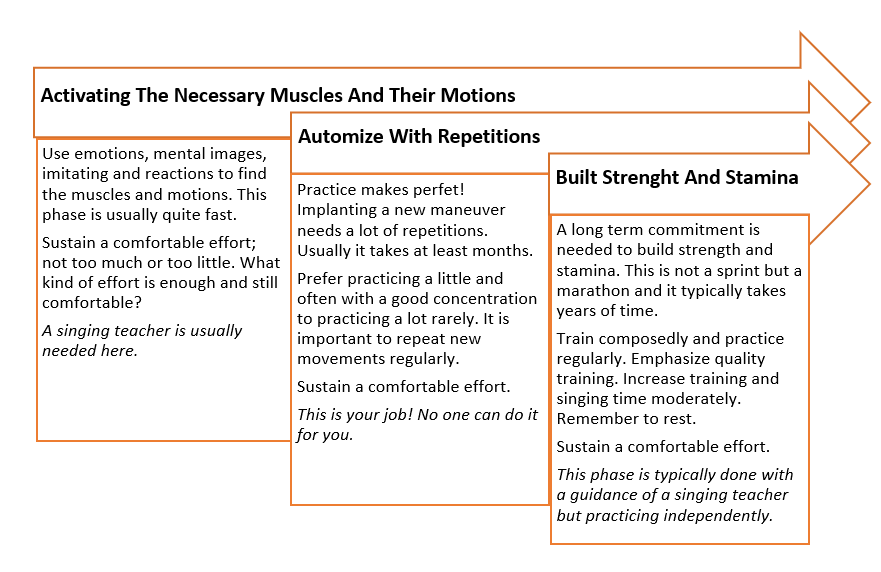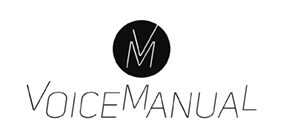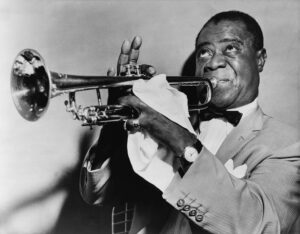Activating The Necessary Muscles And Their Motion
Singing is muscle work. The muscle work in singing is not always visible and that’s why it is challenging to observe it. Finding the necessary muscles and their motion can be difficult and usually support from a singing teacher is needed. In addition self monitoring and reflection skills are needed to find these ”invisible” muscles. Many adult singers have here a little advantage to younger singers.
In order to implement a desired muscular function various mental images, emotions, imitation and natural reactions are used. When a new function is performed for the first time as a result of a mental image or a reflex learning has only started. A lot of practicing is needed to establish it into singing.
Activate And Automize To Establish

Practice Makes Permanent
A lot of repetition is needed to automize new functions of the muscles. There is no short-cut or quick fix or a teacher who could do that on behalf of the singer. Implanting a new maneuver takes time and patience. The best practice for training new maneuvers is ”a little and often with good concentration”. Many things can be practiced even silently and done when traveling in a bus or walking home for example. Just be careful to do exactly what you are supposed to do and not something like that.
A Long Term Commitment
Building strength and stamina to the muscles is not a sprint but a marathon. That applies to singing too. A regular and composed training also increases fitness in singing. An experienced chorister can rehearse all day but even a half an hour can be too much for a beginner.
When building strength to the muscles short series of well focused and precise repetitions are used. When the goal is to add more endurance longer repetitions are used but with lighter weights. Singing training is not about lifting the dumbbells but practicing can be focused very specifically to certain functions.
Singing Is Co-Operation Of Muscles
The muscles co-operate also when singing. Even muscles that are not necessarily needed in the voice production can be involved. Think about a weight lifter; he or she doesn’t just use the arms to lift a barbell but there is a lot of effort in the whole body also. When training a weight lifter can concentrate on small tasks and train and strengthen a specific muscle or motion. In the lifting maneuver these muscles co-operate with each other.
Singing is about co-operation of the muscles all the time. Different tasks (muscles and motions) can be practiced separately but at the end they have to work simultaneously and adapt to each other.
The Goal: Versatile And Elastic Voice
Singing muscles have to be versatile and elastic. A singer can be compared to a gymnast or an acrobat whose muscles are strong and have endurance but at the same time they are also very elastic and flexible. Singing is dynamic. Therefore singing muscles have to be prepared to react and adapt to constant changes in the pitch, dictation, dynamics and many other things.
Remember To Rest
Singing muscles need rest too. Especially professional singers need time for recovery after long and demanding performances. Lack of recovery time can lead to an injury or decrease the performance of an athlete or a singer.







4 thoughts on “How To Train Singing Muscles?”